- Home
- Deepak Chopra
Brotherhood: Dharma Destiny and the American Dream
Brotherhood: Dharma Destiny and the American Dream Read online
“Open, honest, and brilliantly written, Brotherhood reaffirms why our arms, hearts, and policies must remain open to welcome those who are eager to live in the land of promise. Every page contains a thoughtful gem that will enlighten the reader about the universal truths that bind us together. Read this book and take comfort in the knowledge that dreams still matter in America.”
—William S. Cohen, former secretary of defense and chairman and CEO, The Cohen Group
“In Brotherhood, Deepak and Sanjiv beautifully articulate their birthright and the intoxicating and permeative influence it had on their lives as doctors and spiritual practitioners in the Western world. Through their entertaining storytelling, they thoughtfully and humorously depict how, in India, chaos and order, the ancient and modern, and faith and disbelief collide to create enduring influence. I, too, discovered that you can leave India, but that she never leaves you.”
—Jacqueline Lundquist, author and former first lady of the U.S. Embassy, New Delhi, India
“Deepak Chopra and his younger brother, Sanjiv, have written an extraordinary and compelling account of their life’s journey from a privileged upbringing in India to careers in medicine and spirituality in America. It is a story of tradition, of sibling rivalry, of the responsibility to ‘give back at every conceivable opportunity,’ and of immigration to another world to fulfill their respective dharmas. But most of all, it is a story of family, which was their lodestar and remains the touchstone of their lives.”
—Ambassador Elizabeth Frawley Bagley
“The story of Deepak and Sanjiv’s lives easily unfolds, bringing us full circle to the knowledge that brotherhood is universal. Brotherhood takes us on an epic journey discovering the heart of life.”
—Marc Benioff, founder and CEO, Salesforce.com
Copyright © 2013 by Deepak Chopra and Sanjiv Chopra
All rights reserved
No part of this book may be reproduced, or stored in a retrieval system, or transmitted in any form or by any means, electronic, mechanical, photocopying, recording, or otherwise, without express written permission of the publisher.
Amazon Publishing
P.O. Box 400818
Las Vegas, NV 89140
ISBN-13: 9781477800768
ISBN-10: 147780076X
Book design by Brian Moore
Cover design by Rodrigo Corral
Design / Rachel Adam
Cover art © Brad Walker / Getty Images
Author photographs:
(Deepak) © Todd MacMillan / Not Far
Now Studios; (Sanjiv) © Liza Green
To our amazing and loving parents, Krishan and Pushpa Chopra
Contents
To the Reader
1 Sacred River
2 Blind for a Day
3 Charmed Circle
4 Lucky Sari
5 Miracles in Hiding
6 Rama and Lakshmana
7 Laus Deo
8 First on the Waiting List
9 Innocent Bystander
10 Real Doctors
11 Godfather Land
12 First Impressions
13 State of the Art
14 A Giant in Medicine
15 An Obscure Light
16 Being and Bliss
17 The Pathless Land
18 Soothsayer or Charlatan
19 Science of Life
20 Finger on the Pulse
21 Birth Pangs
22 Miraculous Cures
23 American Dreaming
24 Peak Experience
Postscript
Acknowledgments
About the Authors
To the Reader
Writing a double memoir was uncharted territory for us. We had no model to follow. When two people write together, they combine their voices as one. Why didn’t we? Deepak could have controlled himself and not bossed his little brother around (he promised). Sanjiv knows how to hold his own and stick out a gentle elbow when in danger of being pushed out of the nest.
Instead, we chose this novel way of presenting the story of our lives, because it proved more exciting for us and, we hope, for the reader. One brother is free to tell how he remembers early days in Jabalpur and Shillong, seeing through his set of eyes memories, nostalgia, denial, and fantasy. Then a second viewpoint is offered. The facts, as it were, don’t change. A big colonial house in Jabalpur where our father saw a stream of patients every day and our mother quietly fed the poorest ones is what it is. Facts are no more than the seed of a memoir. It was better to let each brother sow his own seedlings, free to let the past unfold in its own peculiar way. We didn’t look at each other’s chapters along the way. There were no arguments over who was right.
Another reason to write as separate voices came from our publisher, who felt that beyond the Chopra brothers lay the larger world of immigration and the American dream. The two of us chose to leave India with no money or property except the intellectual property of a medical school diploma and some dreams. Not many Americans were aware of Indian immigration in the Seventies, much less an “Indian diaspora.” They were focused on their own troubles, for one thing, especially the Vietnam conflict that created a severe doctor shortage and opened the door for two young foreigners to practice medicine here. The general view, to be blunt, was that foreign doctors were necessary but not welcome.
India didn’t want us to leave, either. The government had banned the written examination that a doctor needed to pass before America would grant a work visa. Only a pittance was allowed to be exchanged into dollars for travel abroad. There was a much deeper resistance at work, however. India is a mother culture that actually mothers, that holds its children tight and very reluctantly lets go. As young—and eager to prove ourselves—as we were, we heard tears being shed behind us at the Delhi airport, and not just by our parents. Our choice to step away made us neither fully Indian nor fully American. We had seized a double fate.
At birth, a pair of identical twins shares the same genes, but by the time they turn seventy, their genetic profiles are dramatically unalike. The actual DNA hasn’t changed, but its activity has, rising and falling, recombining thousands of on-off switches. This divergence happened to us, only it was a set of cultural genes that we shared. As you will see, our lives took drastically different paths. Deepak played a major role in bringing Indian spirituality and the medical tradition of Ayurveda to the West. Sanjiv continued on the path of Western medicine to become a professor at Harvard Medical School. There have been times, frankly, when we wondered whether we understood each other’s reality. Such is the fascination and pain of beginning so close.
Today a double fate is more common than ever. By current estimates from the U.S. Census Bureau, 20 percent of Americans have at least one parent who was born abroad. The fabric of America has changed, bringing mixed feelings on all sides. So a double memoir made sense for the Chopra brothers. Doubleness remains true for us forty years on, piling up richness and loss, consternation and clarity. Like everyone else, we can look back on lives unlived. The life we did live feels symbolic, however. Brotherhood is universal. A self gets built, two selves find an orbit around each other, a society absorbs them into a collective fabric that is never the same tomorrow as it was yesterday. We wanted to share our journey with everyone who is building a self in the same complex and often mysterious way.
DEEPAK CHOPRA
SANJIV CHOPRA
1
..............
Sacred River
Deepak
Deepak as a toddler with parents, Krishan and Pushpa Chopra, 1949. Krishan was an army doctor at the time.
HERE. NOW. YOU GO.”
If the priest didn’t mumble these exact words, then his gesture told me to take hold of the stick in his hand. It was time. I was the oldest son. By rights the oldest son is the one to poke a hole in the father’s skull, releasing his soul from this life to the next.
Only vaguely did I know about this ancient ritual. I’d never seen it. Hesitating, I glanced over at my brother, Sanjiv. Being the younger son, he would go next.
This is totally bizarre.
My thought stayed with me. The priest was running everything. Sanjiv and I were almost irrelevant: two modern bystanders caught up in ancestral ways. We had flown back to New Delhi the moment we received news of our father’s sudden death.
The smoke from burning bodies raised an indescribable smell around us and dirtied the sky. It must have been a strong stench, but at that moment I was immune to it. Each pyre occupied its own small plot in the burning ghat, or cremation ground. Women were keening. The logs for cremation formed a social order—cheap wood for the poor; expensive, fragrant sandalwood for those who could afford it. Orange marigolds were also scattered over the bodies of the well-to-do before the fire was lit.
The priest was eyeing me, wanting to move on; this was his daily business. Meanwhile I felt a strange detachment. Centuries of tradition said, “You must not forget us,” and I obeyed, taking the stick from the priest’s hand.
In the flames, which were transparent in the noonday sun, I could glimpse the shape of my father’s body. The shroud had burned away, and the remains were more skeleton than corpse. No horror overcame me. A part of my mind stood apart, admiring the efficiency of the ghat. The fires burned very hot and finished their work with dispatch.
Daddy had b
een alive thirty-six hours ago. He had sat up late to watch, with no enthusiasm, George W. Bush take the oath of office. It was 2001, his first inaugural. That morning, he had walked grand rounds at Moolchand Hospital as usual, with a line of young doctors in tow, and had mentioned to my mother as he kissed her good night that he was feeling a bit of discomfort. Better call K. K. in the morning, one of the young doctors who worked with him, just in case. Now there was empty space where once a person had vibrated with life.
How is an adult defined? Someone who knows the value of doing what he doesn’t like to do. So I did it, driving the pointed end of the stick into my father’s skull. I once read a medical memoir by Michael Crichton that began with a shocking sentence: “It is not easy to cut through a human head with a hacksaw.” Poking a hole in one is easy, though, if it has crumbled nearly to ashes.
How long would I remain this detached?
I passed the stick to Sanjiv and managed to keep my eyes on him without flinching after what I had done. When we’re together, I’m the quiet one. But we both occupied a somber silence at that moment, and a shared bewilderment.
Death is bewildering. The survivors confront something worse than deep sadness—sheer emptiness. A void in the vicinity of the heart holding a place for pain to fill in later. In Buddhism it is said that there is no alternative to emptiness; it only matters how you face it. Unknown to me, I would face it very differently than I imagined.
The priest nodded matter-of-factly when the two brothers had done their sacred duty. The chanting continued for hours. Our legs grew rubbery; we were exhausted and bleary with jet lag.
There is a native people in the desert mountains of western Mexico, the Huichol, who take peyote every day, starting when, as babies, they drink it in their mothers’ milk. Are they in a walking hallucination that feels normal to them? At that moment, Sanjiv and I were two Huichols.
For a long time I didn’t know when I was actually born. Looking back, it might not have mattered. None of us is truly present at our own birth. We are barely prepared to arrive. A newborn’s brain is still manufacturing new neural connections at the rate of one million per minute. It has a few primal reflexes, like grasping with the fists, obeying life’s command of “Hold on tight.” On the African plain a wildebeest or giraffe must know how to walk the instant it drops from the womb to the welcoming, dangerous earth. Survival is at stake. The mother gives a few licks to encourage her calf to stand up, and then the parade of life proceeds on its way, with a wobbly infant bringing up the rear. A human baby isn’t like that. It is a half-finished product, a sketch waiting to be filled in. To remain alive, a baby needs all the care it can get.
Indian families have gotten the message with a vengeance. I opened my eyes that day—in April? October?—to see half a dozen female members of my family, and that group of anxious, beaming aunts, cousins, midwife, and mother would be the smallest group I saw in one room for many years. I was the first child of Doctor Krishan Lal and Pushpa Chopra, born at 17 Babar Road in New Delhi. Perhaps because I was born in a crowd I’ve never felt existential loneliness. It was a pleasure to be named Deepak, because hearing my name made people smile. Deepak means light, and I arrived during Diwali, the festival of lights. Firecrackers were going off in the streets, which helped mask the sounds of my grandfather firing off joyous shots from his old army rifle while standing on the roof of his house. The city was sparkling with thousands of oil lamps to celebrate the victory of good over evil. To name a baby Deepak is a cause for smiling.
The only anxiety was that my father wasn’t present. In 1946 the war was still winding down, and he had been on the Burma front, where it was thought he might still be during my birth, although his exact whereabouts were unknown. It would be another twenty days before he set eyes on his newborn son.
But it wasn’t turmoil or anxiety or superstition that made my parents change my actual birthday from October 22 to April 22, only a technicality around when I was allowed to start school. Moving my birth to the spring of 1947 allowed me to attend school when the family moved to a new station. I’m not sure I have the details clear in my mind even now.
It’s inborn for Indians to look on any day as either propitious or ill-favored. Being born on Diwali is auspicious enough to satisfy anyone, but doubly so for a doctor, since the festival celebrates Lakshmi, goddess of prosperity and healing. (The word “goddess” can be misleading. I was brought up to worship God in the singular. All the Hindu gods and goddesses stand for God, without a plural.)
Every morning my mother lit a lamp and recited daily puja, the household religious ritual, Sanjiv and I at her side, our main fascination being our mother’s singing of the prayers, which was lovely.
Our home was full of visitors and patients from every faith, and my mother cared for all of them. My father’s religion was medicine. An army doctor like my father was allowed to maintain a private practice on the weekends. I became aware early on that Daddy was a special kind of physician. Cardiologists rely on readouts from EKGs to tell them what a patient’s heart is doing, but my father gained a reputation for gathering the same information using only a stethoscope and the sound of a heartbeat. He could time the intervals between the contraction of the two chambers of the heart—the auricle and ventricle—by ear, down to fractions of a second. The EKG only came into general use in the Forties, and, in fact, my father had trained under one of the British doctors who pioneered it when he did a tour of medical duty in India. A doctor’s recollection from that era says that cardiology “was nothing more than having good hearing through a stethoscope,” but my father’s accuracy was considered uncanny.
When he was stationed in Jabalpur, we lived in a huge colonial house with a sweeping drive lined with mango and guava trees. Patients came from all over India as Krishan Lal’s reputation grew. My mother would station herself on the veranda, knitting. She kept an eye out for how each patient arrived, whether on foot or by car with a driver. There was no fee for anyone, but when a poor patient was leaving, she’d quietly tell a servant, Lakshman Singh, to make sure he had something to eat and, if the need was great, a train ticket home. It seems extraordinary, looking back, that Lakshman Singh came with my mother as part of her bridal dowry. He was fourteen. (The last I heard, he is now in his eighties, having outlived both her and my father.)
When I was ten and we were leaving the post in Jabalpur to go to the next in Shillong, a sizable crowd gathered to see my father off at the train station, touching his feet, laughing and weeping. I held Sanjiv’s hand, wondering at this crush of humanity, so many people so deeply moved.
My mother lived through her children and through her husband’s work. She would wait up for him to return from the hospital and quiz him about his cases. Did you rule out a pulmonary edema? Did you exclude atrial fibrillation? She became quite expert at this, and would predict how a case was likely to progress, shaking her head with a mixture of satisfaction and regret if she had been right and the patient didn’t recover. She would also pray for the patients and become vicariously involved, not just in the detective work of diagnosis but in their personal lives as well. My father did the same. I had no way of knowing that this kind of medicine had no future. No one knew any other way at the time.
On the day after the cremation Sanjiv and I returned to the ghat and helped sift through my father’s ashes. The smoldering heap could be touched gingerly, and every fragment of bone that could be picked out was put into a small pouch. The atmosphere was less eerie than the day before. We had woken from our hallucination. A new crowd of pyres was blackening the air. The wailing women had different faces, if grief ever wears a different face. At one point the priest held up a piece of sternum with two ribs attached. This somehow delighted him.
“Ah, your father was enlightened! See, this proves it,” he exclaimed. To him, the fragment looked like a figure sitting in Samadhi, or deep meditation.
My mother, who was arthritic and confined to a wheelchair, hadn’t attended the cremation. It’s fairly usual for some of the family who are closest to the deceased to stay away. I hadn’t had time to know what was coming over me emotionally, but I could faintly smell it—an acrid bitterness that had no name. Perhaps the constant activity surrounding death in India is a wise old way to keep shock from paralyzing us. The only person who had burst into tears since my arrival was Shanti, the live-in servant who greeted me at the door when I was driven to my parents’ house, on Link Road in Defence Colony. That area of South Delhi took its name because the houses were built by Indian veterans of World War II who had each been given a free lot in gratitude for their service.

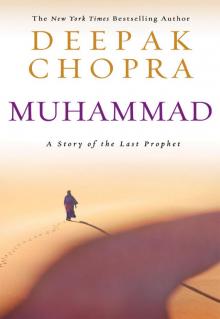 Muhammad: A Story of the Last Prophet
Muhammad: A Story of the Last Prophet Buddha
Buddha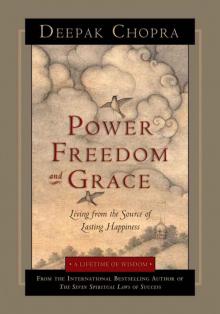 Power, Freedom, and Grace
Power, Freedom, and Grace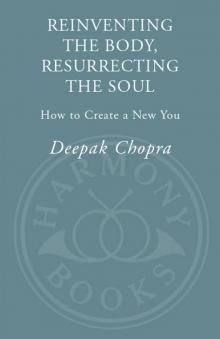 Reinventing the Body, Resurrecting the Soul: How to Create a New You
Reinventing the Body, Resurrecting the Soul: How to Create a New You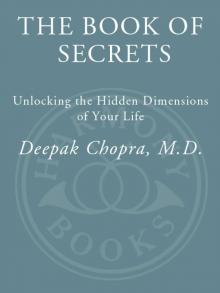 The Book of Secrets: Unlocking the Hidden Dimensions of Your Life
The Book of Secrets: Unlocking the Hidden Dimensions of Your Life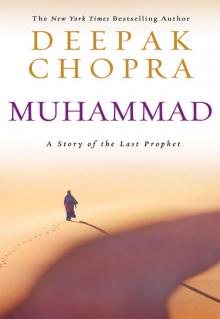 Muhammad
Muhammad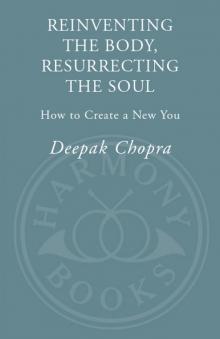 Reinventing the Body, Resurrecting the Soul
Reinventing the Body, Resurrecting the Soul